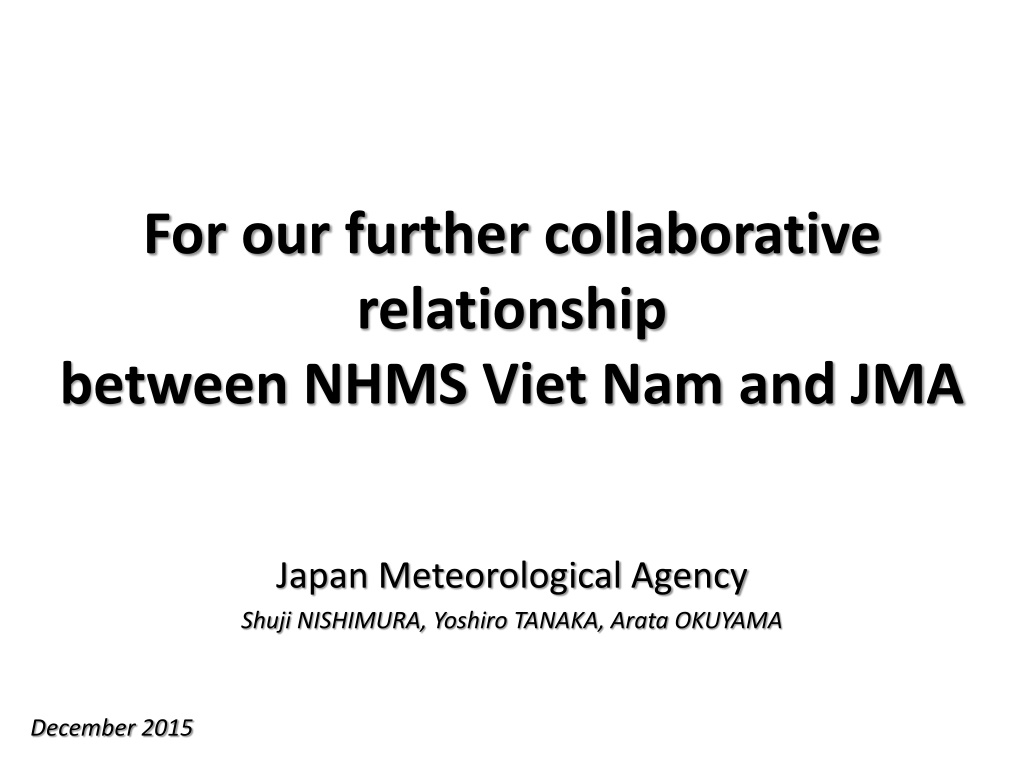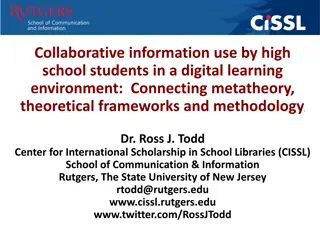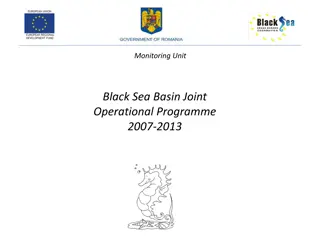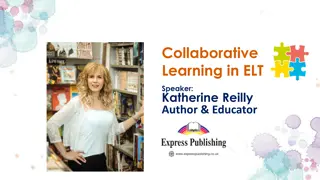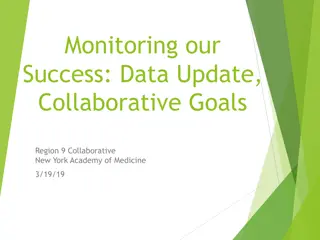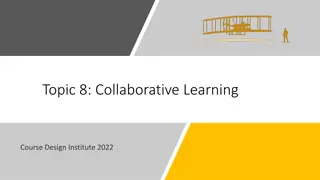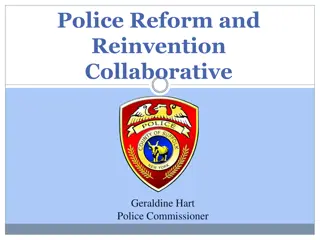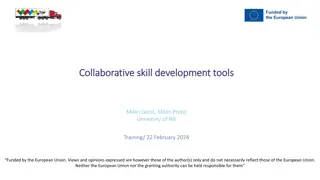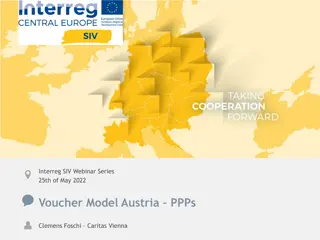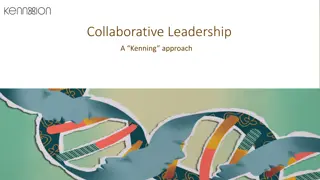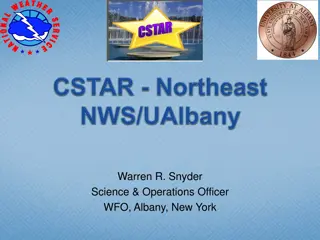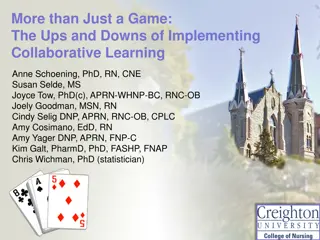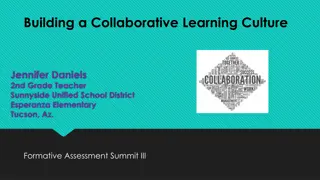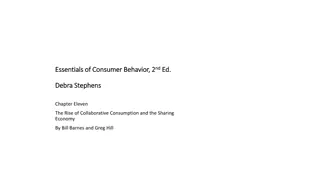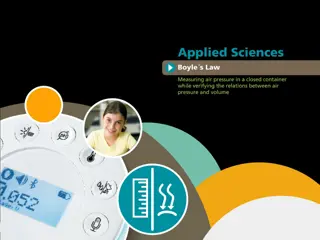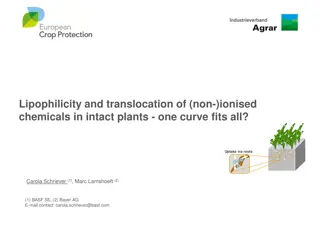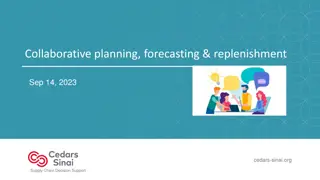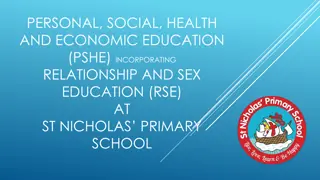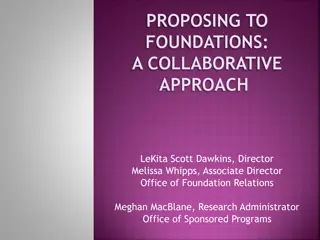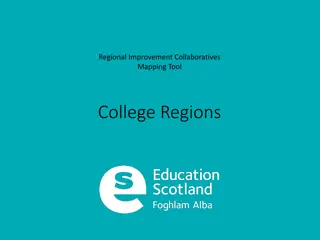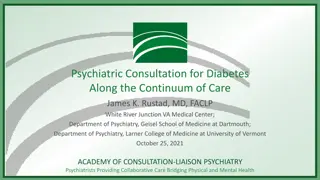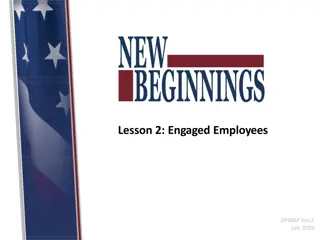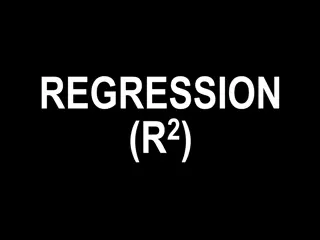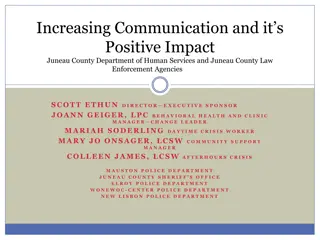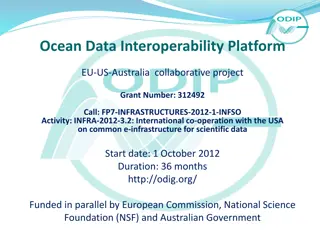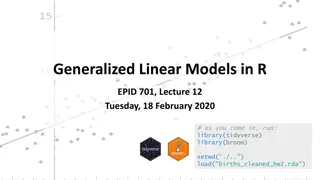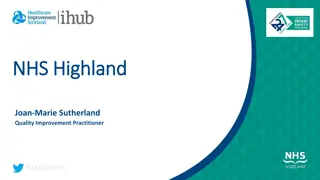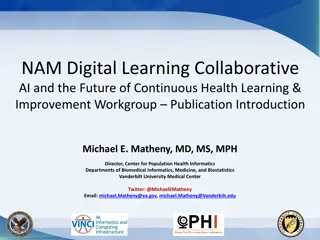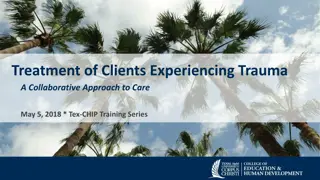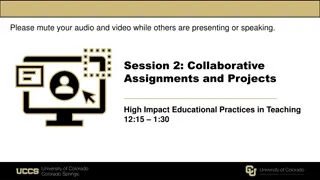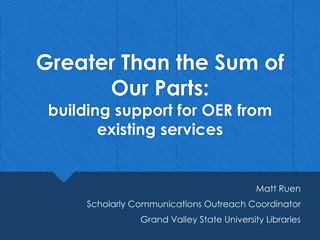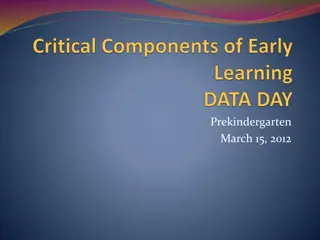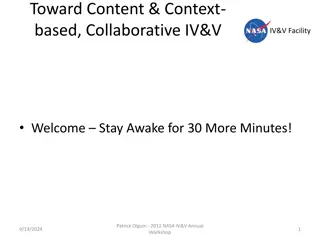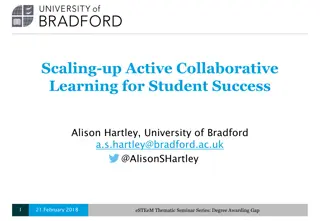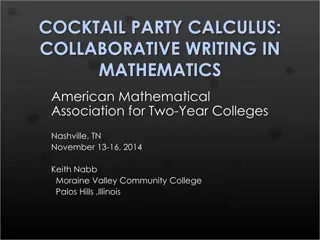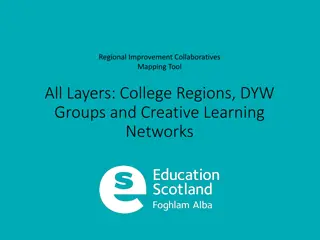Enhancing Collaborative Relationship Between NHMS & JMA
NHMS Vietnam and JMA Japan Meteorological Agency aim to strengthen their collaboration by sharing skills, knowledge, and resources for better satellite data utilization, radar integration, and regional radar data exchange in Asia. JMA offers technical support in meteorology, typhoon forecasting, observing systems, and more to enhance the partnership further.
Download Presentation

Please find below an Image/Link to download the presentation.
The content on the website is provided AS IS for your information and personal use only. It may not be sold, licensed, or shared on other websites without obtaining consent from the author. Download presentation by click this link. If you encounter any issues during the download, it is possible that the publisher has removed the file from their server.
E N D
Presentation Transcript
For our further collaborative relationship between NHMS Viet Nam and JMA Japan Meteorological Agency Shuji NISHIMURA, Yoshiro TANAKA, Arata OKUYAMA December 2015
The reason why we came here? To share skills and knowledge for satellite data utilization with many Viet Nam NHMS staff. JMA would like NHMS to fully utilize HimawariCast system and to enjoy maximum benefit of Himawari-8/9 using SATAID. However, satellite data utilization is only a part of our possible collaboration.
Good relationship between NHMS & JMA NHMS and JMA has established close relationship. Satellites Telecommunications Climate Radar Tropical Cyclones Etc. Q. Why do we collaborate? A. Because we believe this is Good
WMO RAII & RAV Joint WIGOS Project Improving Radar Data for DRR (discussed in Jakarta, October 2015) Proposed Overall goals: Improvement of data quality of existing radars Development and expansion of national radar network Near real time International exchange of radar data Development of sub-regional radar data center(s)
Radar Integration in Southeast Asia Thailand (RA-II) Malaysia (RA-V) Indonesia (RA-V) [TEST by JMA]
[TEST] Composite (radar & satellite) Data source: BMKG, MMD, JMA Example of radar composite (Indonesia, Malaysia, Japan) displayed on SATAID
Radar Data Exchange in Asia Our goal, our dream Thai JMA Lao BMKG Malaysia Regional Network Myan mar PAGASA Brunei Viet Nam Viet Nam NHMS is expected to play a major role in establishing international radar network! Cambodia Singapore
For further collaborative relationship between NHMS & JMA JMA wishes to further enhance our cooperative relationship. JMA is ready to offer technical supports in various fields such as: General meteorological/climatological services JICA Group Training Course Typhoon/Storm surge forecast Typhoon Committee Attachment Training Real-time storm surge products Observing systems (radar, surface) Satellite data utilization Climate services TCC website (Forecast products, ITACS, CRM, RAII Pilot Project) TCC Training seminar Marine services Provision of marine meteorological models and relevant training Aviation weather services Telecommunications
JICA Group Training Course Outline JICA group training course Enhancement of meteorological services has been held at JMA since 1973. The course provides participants with wide-range of skills and knowledge for meteorological services through lectures, exercises and study tours. 3-month (Sep Dec) training course Held in Japan every year Participation from 8 NMHSs (one expert from each country) Benefit/Goal To learn wide-range of skills and knowledge through hands-on training and To develop an action plan to improve your NMHS s services. For more details, please contact at iao-jma@met.kishou.go.jp
Typhoon Committee Attachment Training Outline Attachment Training is for forecasters to enhance capability of tropical cyclone (TC) analysis/forecasting through hands-on training. Two-week training, held in July every year Six persons from Members of Typhoon Committee and Panel on Tropical Cyclones Benefit/Goal Trainees are to learn Basic knowledge and practical skills on operational TC analysis/forecasting How to use SATAID, a JMA s software to visualize meteorological information QPE/QPF and storm-surge forecasting and TC related services in Japan. For more details, please contact at rsmc-tokyo@met.kishou.go.jp
Tokyo Climate Centers Website Outline Tokyo Climate Center (TCC), as WMO/RCC in RA-II, provides seasonal forecast data and other climate information including Forecast data of GPC Tokyo (Global Producing Center for Long-range Forecasts) An advanced, web-based tool for climate system analysis (named ITACS ) Best practices in the Climate Risk Management * Note: some products/tools are password-protected (ID/password is issued upon request.) Benefit/Goal Help NMHSs in developing their long-range forecasts or in issuing early waring on extreme climate events. ITACS enables NMHSs to monitor current climate conditions and analyze the characteristics and factors behind extreme climate events. Enhance NMHSs capacity to deliver climate services and mitigate climate-related disasters. For more details, please contact at tcc@met.kishou.go.jp or visit http://ds.data.jma.go.jp/tcc/tcc/index.html
Forecast Products in Support of Early Warnings for Extreme Weather Events Outline To support Asia-Pacific NMHSs in the provision of early warnings for extreme events, TCC developed a set of extreme weather warning products based on JMA s operational one-month ensemble prediction system. Asia tailored EFI map Time-series representations of EFI and EPSgrams are also provided for selected major cities. For more details, please contact at tcc@met.kishou.go.jp or visit http://ds.data.jma.go.jp/tcc/tcc/gpv/EFI/index.php (password-protected)
ITACS: Interactive Tool for Analysis of Climate System Outline A web-based application software for climate monitoring and climatological analysis such as composite, correlation, EOF and SVD. Users can download their analysis results in the form of gridded data. < Interface of ITACS > < Examples of analysis > Latitude-Longitude Map Polar Vertical Cross Section Stereographic Map Time-Longitude Cross Section Time-Series Graph For more details, please contact at tcc@met.kishou.go.jp or visit http://extreme.kishou.go.jp/tool/itacs-tcc2011/ (ID/password are requested in using ITACS)
Climate Risk Management (CRM) Outline This new website includes following information to support CRM activities: Clarification of basic CRM concept and related processes Good practices in CRM conducted by JMA together with partner organizations in the agriculture and apparel/fashion industries Agricultural sector Apparel industry Control of goods in stock, Arranging sales plans To take countermeasures against climate variability by controlling water depth in their rice fields Drugstore company In preparation For more details, please contact at tcc@met.kishou.go.jp or visit http://www.data.jma.go.jp/gmd/risk/en/index.html
RA-II Pilot Project on Information Sharing on Climate Services Outline WMO RA II - 15 decided to establish a pilot project on information sharing on climate services, for collecting and sharing information on climate services provided by NMHSs as well as activities related to GFCS under the lead of TCC. Based on an questionnaire investigation to RA-II Members, TCC developed a website to share climate services by NMHSs and information on good practices in the application of climate information in various fields, such as agriculture, health and water management. Selecting a name of RA II Member gives the list and links to climate services of each Member For more details, please contact at tcc@met.kishou.go.jp or visit http://ds.data.jma.go.jp/tcc/pilot/
TCCs Capacity Development Activity Outline Tokyo Climate Center (TCC), as WMO/RCC in RA II, holds annual training seminars focusing on climate services, as part of capacity development activities. The seminar consists of exercise sessions and classroom lectures. A dozen of experts at NMHSs (one expert from each country) in Asia-Pacific region are invited. TCC experts visit NMHSs for technical transfer or training seminar as follow- up activities of the annual training seminar. Benefit/Goal Trainees are to obtain practical knowledge and skills necessary for operational climate services through exercise sessions. TCC puts training materials used in the seminar on TCC website and trainees can share them with their colleagues. For more details, please contact at tcc@met.kishou.go.jp or visit http://ds.data.jma.go.jp/tcc/tcc/index.html
TCC Training Seminars History Theme Participants Nov. 2008 Climate Information and Forecasting 13: China, Hong Kong, India, Indonesia, Iran, Korea (2), Lao, Malaysia, Mongolia, Philippines, Thailand, Viet Nam Dec. 2009 Climate Analysis using Reanalysis Data 11: Bangladesh, Indonesia, Laos, Malaysia, Mongolia, Pakistan, Papua New Guinea, Philippines, Sri Lanka, Thailand, Viet Nam Jan. 2011 Application of Gridded Data to Seasonal Forecast Products 19: Bangladesh, Hong Kong, Indonesia, Kazakhstan, Laos, Malaysia, Maldives, Myanmar, Nepal, Pakistan, Philippines (2), Qatar, Singapore, Sri Lanka, Thailand, Uzbekistan, Viet Nam Nov. 2011 One month Forecast Products 13: Bangladesh, Cambodia, Hong Kong, Indonesia, Laos, Malaysia, Mongolia, Myanmar, Pakistan, Philippines, Sri Lanka, Thailand, Viet Nam Nov. 2012 Climate Analysis Information 12: Bangladesh, Hong Kong, Indonesia (2), Laos, Malaysia, Mongolia, Myanmar, Nepal, Philippines, Sri Lanka, Thailand, Viet Nam Nov. 2013 Seasonal Forecast Products 16: Bangladesh, Cambodia, Hong Kong, Indonesia (3), Laos, Malaysia, Mongolia, Myanmar, Nepal, Papua New Guinea, Philippines, Sri Lanka, Thailand, Viet Nam Jan. 2015 Global Warming Projection Information 13: Bangladesh, Cambodia, Indonesia, Hong Kong, Laos, Malaysia, Mongolia, Myanmar, Nepal, Philippines, Sri Lanka, Thailand, Viet Nam Nov. 2015 One-month Forecast 15: Bangladesh, Cambodia, Indonesia, Hong Kong, Laos, Malaysia, Mongolia, Myanmar, Nepal, Pakistan, Philippines, Singapore, Sri Lanka, Thailand, Viet Nam For more details, please contact at tcc@met.kishou.go.jp or visit http://ds.data.jma.go.jp/tcc/tcc/index.html
Training on JMAs Marine Meteorological Models Outline JMA provides NMHSs with marine meteorological models such as storm-surge model and gives training for operational use to mitigate coastal disasters (e.g. high wave, storm surge). Provided Models Storm Surge Model Ocean Wave Model A training in Japan or your country Typically, week-long training (details to be decided through discussion) Benefit/Goal Through the training, Trainees are to get latest knowledge on marine meteorology JMA provides its marine meteorological models NMHSs use JMA model operationally JMA supports operationalization of the model
Training on JMAs Marine Meteorological Models JMA provides NMHSs with storm-surge model etc. and gives training for their own operational work in various ways: Technical workshop coordinated by WMO Attachment training at JMA Individual visit to each NMHS (Recent cooperation) Training and Capacity building on Storm Surge Modeling and Risk Mapping (24-28 June 2013, Thailand) Organized by Asian Disaster Preparedness Center (ADPC) Participants: 14 participants: PAGASA (Philippines), DMH (Myanmar), DOM (Sri Lanka), NHMS (Vietnam), TMD (Thailand) Attachment training on JMA wave model (5-7 November 2013, JMA) Participants: Three experts of BMKG (Indonesia) Coastal Inundation Modeling Training (15-17 February 2014, Bangladesh) Participants: 12 (BMD) Attachment training on Marine Numerical Modeling (14-18 July 2014, JMA) Participants: An expert of MMD (Malaysia) Seminar-Workshop on Wave Forecasting and the Use of JMA Storm Surge Model (15-18 December 2014, the Philippines) Organized by PAGASA Participants: 26 (PAGASA) Training Workshop on JMA Wave, Storm Surge and Oil Spill Trajectory Models (7-11 September 2015, Malaysia) Organized by MMD (Malaysia) Participants: 14 (MMD)
Real-time Storm Surge Forecast Outline JMA issues real-time storm surge forecasts to Typhoon Committee members in the framework of WMO Storm Surge Watch Scheme (SSWS) TC members can refer storm-surge forecast. The products are storm-surge distribution map and time series at stations. The stations are added upon request. JMA plans to start issuing ocean-wave forecasts in the region. Benefit/Goal Each member can refer storm-surge and wave forecast via JMA Numerical Typhoon Website. Station for storm-surge time series in your own region can be added. The forecasts gives second opinion and endorsement of the members own forecasts.
Real-time Storm Surge Forecast WMO Storm Surge Watch Scheme (SSWS) Following the storm surge disaster by Cyclone Nargis in Myanmar in 2008, a request to facilitate development of a Storm Surge Watch Scheme (SSWS) was presented to WMO/SG at 60thWMO Executive Council (Geneva, June 2008). Within regional SSWS, RSMC-Tokyo started issuing real time storm surge forecast in 2011. Distribution maps Whole / Typhoon around enlarged maps are provided. (3 hourly up to 72 hours) Time series charts Point predictions are provided. (storm surges / tides, astronomical tides, sea level pressures and winds) JMA storm surge model for Asia Area: 0.0-46.0N, 95.0E-160.0E 2 minutes resolution (3.7 km) 72 hours forecast 3 hourly product 4 times run a day (00/06/12/18 UTC)
JMA SST product, MGDSST (Merged satellite and in situ data Global Daily SST) Global, Daily, 0.25-deg resolution Space Time OI Polar-orbiting satellite data: Infrared radiometer NOAA-18, NOAA-19, MetOp-A Microwave radiometer AMSR2/GCOM-W, WindSat/Coriolis In-situ data: ship, buoy, Argo Gridded data (text format) is available on NEAR-GOOS Database
NEAR-GOOS Regional Real time Database http://ds.data.jma.go.jp/gmd/goos/data/ The database provides graphic charts of various oceanographic analyses, in-situ observations and various GPVs GTS data (SHIP, BUOY, BATHY, TESAC, TRACKOB) JMA R/Vs survey data JMA oceanographic analyses (SST, subsurface temperatures, SSH, current) Sea ice distribution
New SST product under development (NOAA 18/19, MetOp) (AMSR2, WindSat) (Himawari-8) to be newly used JMA is developing a regional SST product using Himawari-8 data: Northwestern Pacific, Daily, 0.1-deg resolution
RIC Tsukuba WMO Regional Instrument Centre (RIC) Tsukuba of JMA supports WMO members by calibrating their standard meteorological instruments. JMA/WMO Training Workshop on Calibration and Maintenance (2013) Practical training on calibration with experts from BMD, Bangladesh Meteorological Department (2013) Recent collaboration Member Thailand Oman Indonesia Bangladesh Hong Kong Indonesia Fiji Mozambique CalibratedInstruments Barometer,Thermometer,Anemometer Barometer,Thermometer,Hygrometer Barometer,Thermometer,Hygrometer Barometer,Thermometer,Hygrometer Anemometer Pyranometer Barometer,Thermometer Barometer,Thermometer Jun 2010 Feb 2012 Nov 2012 Oct 2013 Jan 2015 Jun 2015 Jun 2015 Dec 2015 For more details, please visit http://www.jma.go.jp/jma/jma-eng/jma-center/ric/RIC_HP.html
JMA would very much appreciate your feedback!! Your frank views or opinions for our future collaboration Your requests or comments to JMA Thank you very much !!
